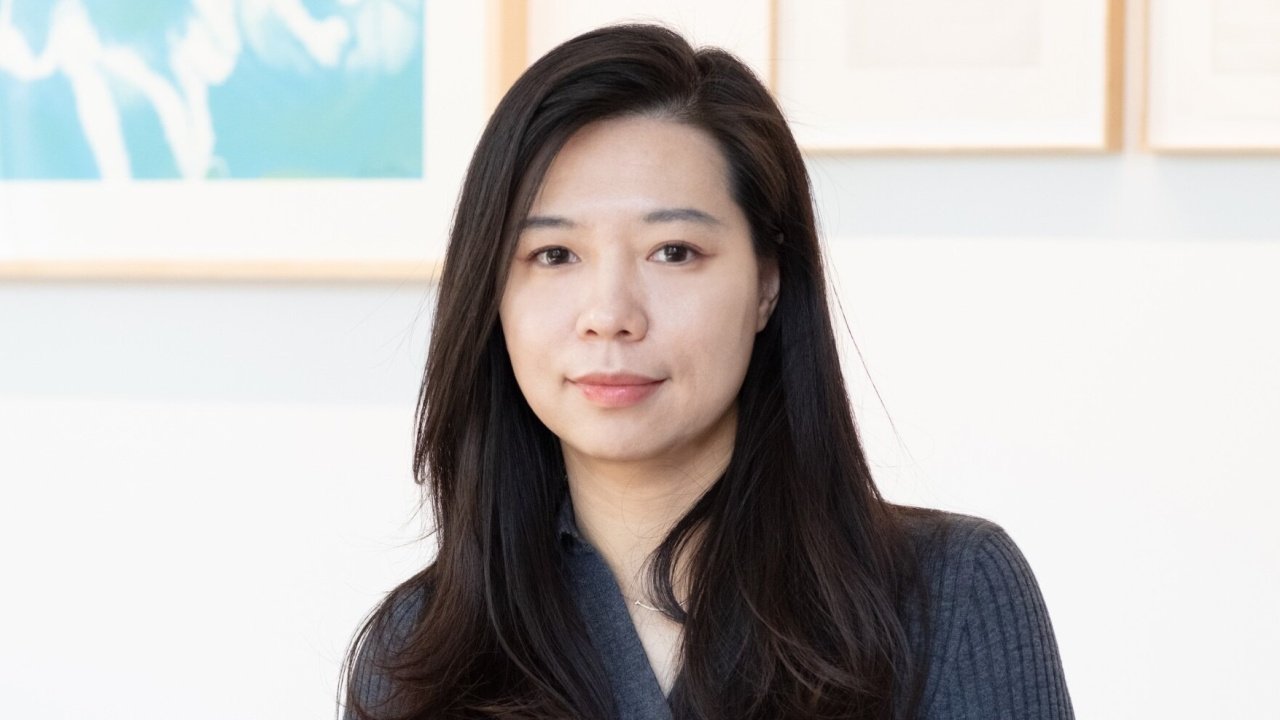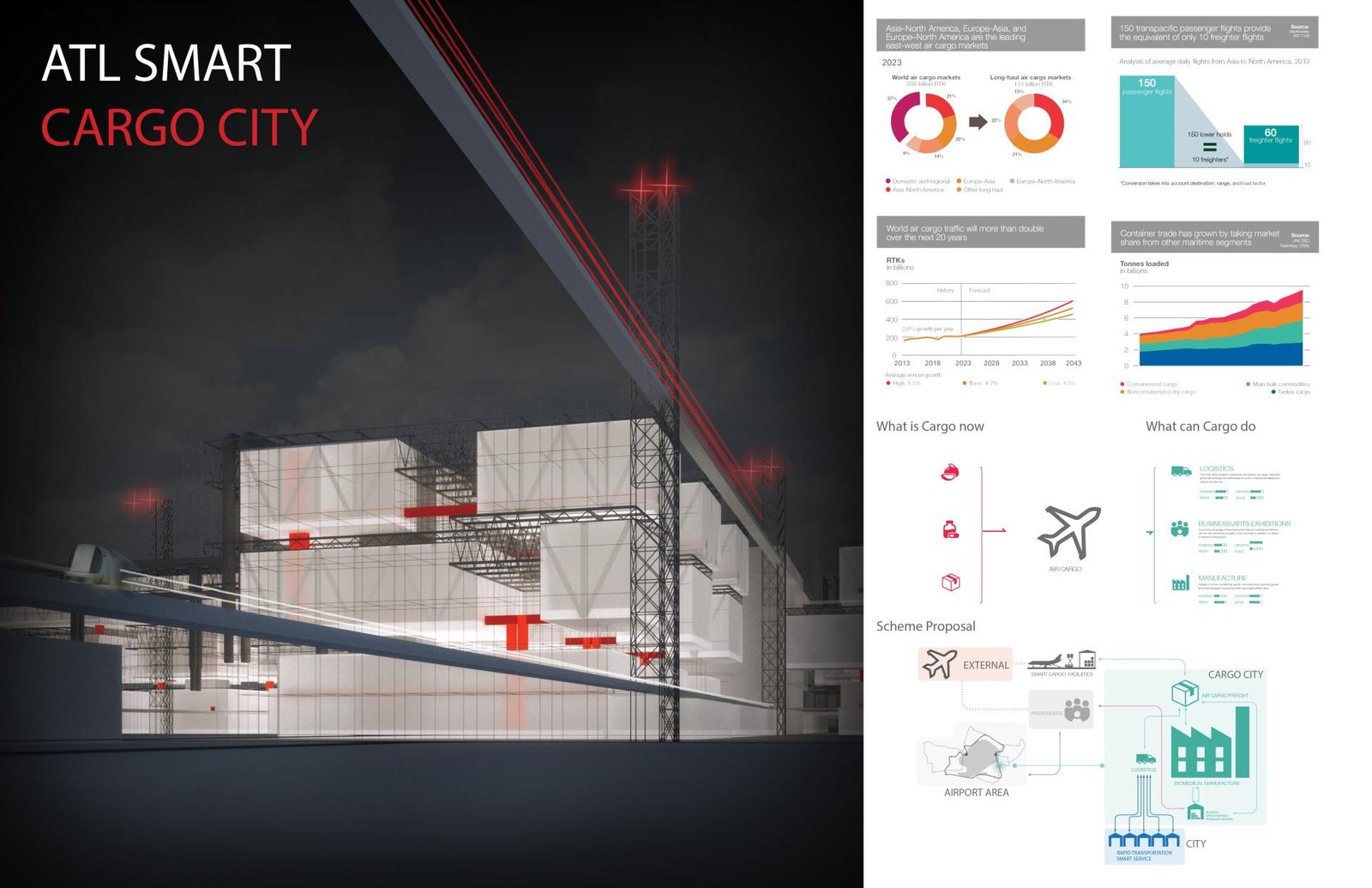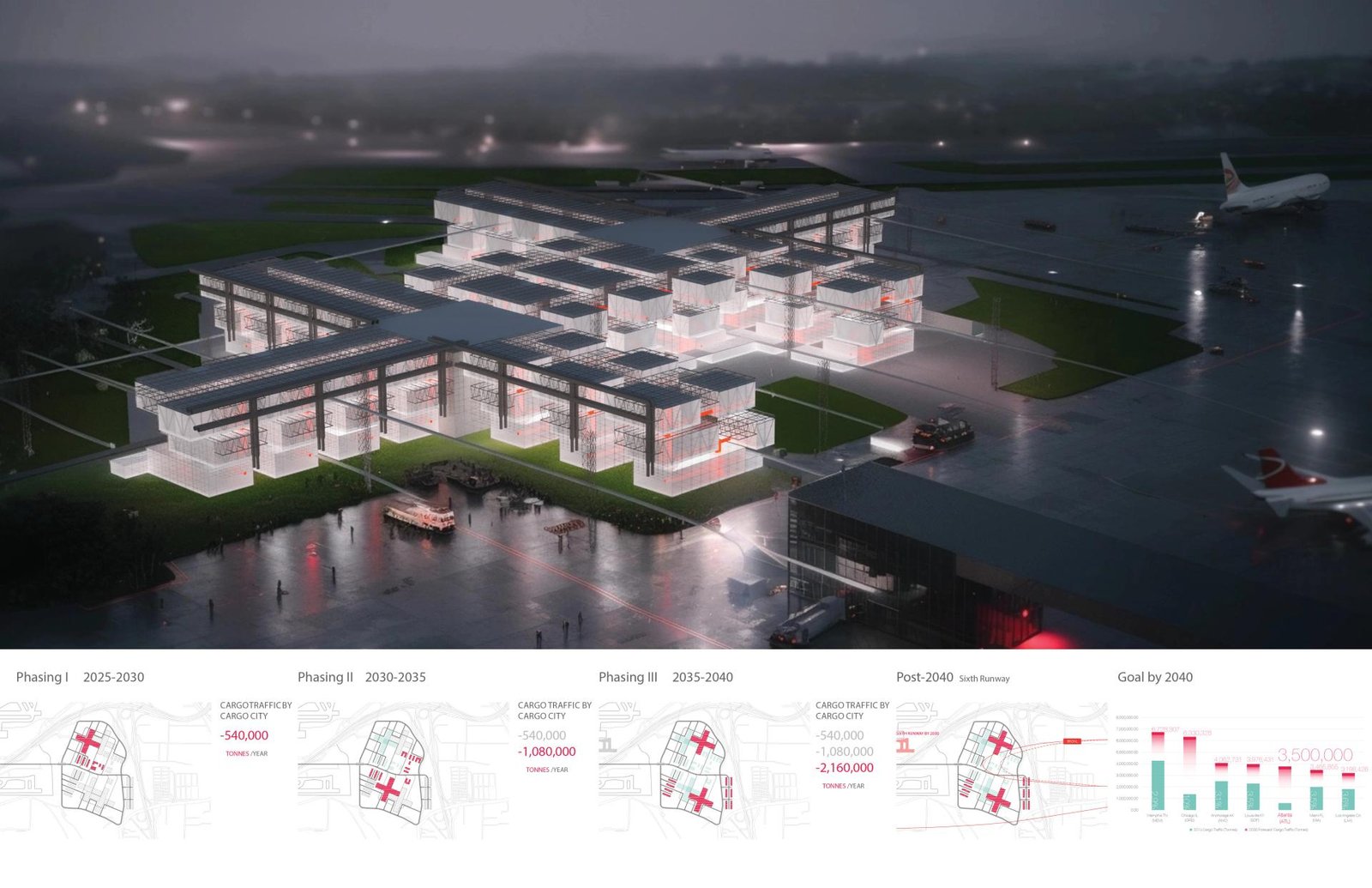
Chloe Kang | A Conversation about Integrating Nature into Everyday Objects
July 22, 2025
Persephone by Eleven Visualisation: A Living Story in Stone & Greenery
July 23, 2025Mengyao Ye
Mengyao Ye is an architect and urban planner whose work explores the intersection of infrastructure, technology, and spatial design. With a background from Zhejiang University and the University of Pennsylvania, her projects focus on embedding intelligence and adaptability into the built environment through a systems-driven design approach.
Thank you! I submitted this project because it explores how architecture and urban design can evolve through technology. The idea of embedding IoT into the logistics network — from city-scale cargo routing to real-time tracking systems — felt like a timely and meaningful response to the future of infrastructure.
The NY Architectural Design Awards recognize innovation at multiple scales, and I saw this as the right platform to share a proposal that reimagines how cities move goods as intelligently as they move people.
The defining vision behind this project was to transform air cargo from a back-of-house operation into an intelligent, city-integrated system. By embedding IoT technologies across a distributed smart cargo network — from urban transfer stations to airport logistics — the project repositions infrastructure as something visible, connected, and adaptive.
Rather than simply expanding existing facilities, it proposes a smarter, decentralized model where data, rail, and urban land use work in sync. The ultimate goal is to build a more resilient cargo ecosystem that responds to real-time demands while reducing pressure on highways and urban congestion.
My interest in architecture has always been rooted in systems — how cities operate, how infrastructure connects people, and how data and design can work together. That curiosity started early and led me to study urban planning at Zhejiang University, where I explored the logic of cities at scale.
Later, pursuing my Master of Architecture at the University of Pennsylvania allowed me to bring those abstract systems down to the human scale — to explore how buildings could integrate with transit, logistics, and even smart technologies. I see design as a way to synthesize complexity, and this project became a platform to explore exactly that: how to embed intelligence and adaptability into the built environment.
The mission behind my work is to design architecture that understands the systems around it — buildings that aren’t isolated objects, but part of the larger urban network. I aim to create solutions that enhance city efficiency, whether through transit integration, logistics flow, or digital connectivity.
At the same time, I believe architecture must serve people on an intimate level. Even the most technically advanced design should consider the rhythms of daily life. For me, it’s about finding that balance: between the scale of infrastructure and the human experience embedded within it.
One of the biggest challenges was translating research and data into actionable design moves. I spent a lot of time studying how Hartsfield-Jackson Airport operates — from cargo workflows to how it connects with local transportation and MARTA rail lines.
Understanding these systems at a technical level was one thing, but the real challenge was weaving that complexity into a coherent urban vision. It pushed me to think more critically about how infrastructure and data could actively inform spatial planning.
In the end, those challenges helped the design become more grounded — it wasn’t just a futuristic concept, but something deeply rooted in how Atlanta actually moves.
My design process is highly iterative. It rarely follows a straight line — instead, it’s about testing, adjusting, and re-evaluating at every step. An idea might solve one problem but create another, so I constantly loop back, reframe, and refine.
For complex systems like smart logistics or urban integration, the process often starts with mapping connections — movement, infrastructure, and data. From there, I prototype spatial strategies that respond to those flows. It's a continuous back-and-forth between the big picture and the details, until the design finds both clarity and coherence.
"Strategic. Connected. Evolving."
Strategic – because every move was grounded in data, logistics planning, and urban systems.
Connected – reflecting both the integration of IoT and the way the project links city infrastructure.
Evolving – the design is phased, adaptive, and anticipates future growth and innovation.
One of the most meaningful pieces of feedback came from my tutor at the University of Pennsylvania, where this project first began. They encouraged me to look not just forward, but inward — to see how the future city could be shaped by the systems already in place today. That insight helped me realize that innovation doesn’t always mean starting from scratch; it can come from rethinking and reactivating the infrastructure we already have.
Additionally, that feedback reshaped my entire approach — it made the project more grounded, more realistic, and ultimately more impactful. It was about connecting the future to the present, both physically and conceptually.
Receiving this recognition affirms that architectural innovation today is not just about form — it’s about how we rethink systems, flows, and technologies at scale. This project started as an academic exploration, but being honored for it validates that these ideas have real relevance in shaping future infrastructure.
As an individual designer, it encourages me to keep pursuing work that bridges the gap between data and space, and to continue imagining how design can enhance how cities function, not just how they look.
This award reinforces my belief that architecture can play a much larger role in shaping how cities operate, not just through form-making, but through intelligent systems, infrastructure, and data integration. It’s encouraged me to keep pursuing work that blends urban strategy with technology, and to look for opportunities where architecture intersects with transportation, logistics, or public systems.
In my career, I hope to take on more multidisciplinary projects where design thinking can be applied to solve complex, city-scale challenges, and this award helps affirm that path.
I’ve always dreamed of designing my future home — not just as a personal retreat, but as a living experiment in adaptability and smart integration. I wonder what kind of city I’ll be living in when I retire. Will it be one shaped by hyper-efficient logistics, connected infrastructure, and real-time data, like the systems I imagined in this project?
The idea of a house that responds intelligently to its environment — one that evolves with its occupant and surroundings — inspires me. It’s not just about technology, but about designing with awareness, care, and foresight.
In the next decade, I see architecture becoming increasingly intertwined with data, automation, and intelligent systems. With the advancement of artificial intelligence and digital tools, we’re entering an era of unprecedented efficiency — but that efficiency should be in service of deeper human needs.
As architects, we’ll be expected not just to design beautiful spaces, but to propose intelligent urban solutions that respond in real-time to how people live, move, and interact. I see myself contributing to this shift by focusing on projects that bridge infrastructure, technology, and empathy, where design serves both the system and the soul.
I believe sustainability is not just about energy performance — it's also about designing smarter systems that reduce waste, improve logistics, and optimize how cities operate. In this project, sustainability comes through in the way existing infrastructure is reused, how freight is shifted off highways onto rail, and how land use is aligned with environmental constraints like airport noise contours.
My goal is to continue designing architecture that’s deeply connected to systems, where technology, policy, and design work together to create urban environments that are not only efficient, but resilient and adaptable over time.
If I could design anything without limits, I would create a fully integrated infrastructure system on Mars — not just buildings, but an entire smart ecosystem that supports life in an extreme environment. It would use real-time sensors, automated logistics, and self-regulating energy systems to create a self-sustaining colony.
Designing for Mars challenges everything we know about construction, resilience, and livability. But it also offers a blank slate — a chance to build an urban system from scratch that truly integrates architecture, infrastructure, and technology at every level.
Winning Entry
ATL Smart Cargo City | 2025 NY Architectural Design Awards
Hartsfield-Jackson Atlanta International Airport (ATL), known as the world’s busiest airport for passenger traffic, is now looking to elevate its air cargo operations to match its global standing. While its current cargo traffic lags behind other major U.S. airports, ATL has set an ambitious goal... (read more here)
Mengyao Ye
Mengyao Ye is an architect and urban planner whose work explores the intersection of infrastructure, technology, and spatial design. With a background from Zhejiang University and the University of Pennsylvania, her projects focus on embedding intelligence and adaptability into the built environment through a systems-driven design approach.
Explore more design insights From Concept to Interaction: Tianjian Li and Yifan Deng Draw Stories in Space here.







